Purchasing platform of Pharmaplace AG
Pharmaplace AG is the operator of the purchasing and collaboration platform of the same name for small and medium-sized companies in the pharmaceutical industry in Germany and Europe. In the e-procurement sector pharmaplace offers its customers on the one hand traditional services such as catalogue ordering systems, tendering or auctions. On the other hand, an innovative, procurement-supporting system is made available with the principle of collective sourcing which meets the special requirements of SMEs. Collective sourcing offers the ad hoc grouping of intracompany and intradepartmental requirements for expendable items and manufacturing materials.
Inhaltsverzeichnis
1. The company2. e-business vision and e-business strategy
Desktop purchasing, tenders, auctions, collective sourcing
3. Procurement solution
Collective sourcing process, request for demand, request for quotation, collective forecasting, collective developing
4. Implementation
Collective sourcing tool
5. Operation
Profitability
6. Success factors
1. The company
Pharmaplace is a purchasing cooperation which currently involves over forty small and medium-sized pharmaceutical companies and was founded in 2000 by nine pharmaceutical companies and BPI Service GmbH, a subsidiary of the German Association of the Pharmaceutical Industry (BPI), as a joint-stock company.
pharmaplace provides a purchasing platform for its cooperation participants which is essentially made up of a catalogue-based ordering system (ordering solution) and tendering instruments (sourcing solution). The core of pharmaplace is the purchasing crew, which is responsible for evolving and supplying content (basic agreements, nomenclatures, etc.). pharmaplace currently has seven employees in total who work in the strategic areas of management, purchasing, sales, marketing and IT. Typical characteristics of pharmaplace are flat hierarchies and short decision-making channels.
Background
The development of pharmaplace goes back to the einkauf@bpiof initiative that was launched by BPI in 1999, where approximately 30 pharmaceutical companies successfully tested the future pharmaplace business model with a joint purchasing cooperation. The service was mainly geared to SMEs, as they are faced with a number of special challenges when launching e-business and e-procurement solutions. In addition to financial and personnel restrictions, these challenges can mainly be seen in the mostly smaller and more individual procurement volumes that hamper the use of bundling effects. Increasing market transparency and intensive competition are also presenting SMEs with special challenges.
Optimisation of purchasing processes offers SMEs the chance to achieve above-average utility effects and to recoup some of the competitive disadvantages they experience compared to major corporations. Against this backdrop, the objective of the purchasing cooperation einkauf@bpi was to create additional benefits within the area of purchasing for the member companies, to improve the competitiveness of members through sustained cost cutting, to bundle demand and to introduce the member companies to e-business and e-procurement solutions.
Industry sector, product and target group
pharmaplace is pursuing the cooperation strategies of einkauf@bpi in an independent company. A key feature is the foundation of the company “from the industry for the industry”. The target group of pharmaplace are SMEs in the pharmaceutical industry in Germany. An initial step towards Europeanisation is, for example, the cooperation with the industry-specific information and science platform europharm smc.
In addition to the purchasing cooperation, which is based on the negotiation of members’ individual needs in the form of basic agreements, pharmaplace offers its members other services and purchasing services. These include, for example, the auditing of suppliers, the preparation and implementation of supplier enquiries and the issue and implementation of calls for tenders and demand auctions. The service spectrum is continually being expanded.
Corporate vision
Against the described background, pharmaplace has the following corporate vision:
the pharmaceutical industry in Germany (Europe).
2. e-business vision and e-business strategy
The combination of a cooperation and marketplace area with the moderation of the supplier-customer relationship by sector and purchasing experts forms the core of the corporate strategy of pharmaplace. This approach allows members to achieve price advantages, to optimise their procurement processes and to develop specific know-how. E-business and e-procurement technilogies are key aspects of the services. In the following we shall outline the central services provided by pharmaplace.
e-business fields of application in the company
The business model of pharmaplace is based on several pillars. These include the following services:
- Basic agreements: pharmaplace negotiates basic agreements with selected suppliers for its members. Combining the needs of several or all members makes it possible to negotiate larger volumes and therefore leads to a reduction in purchase prices. The basic agreements can be used by all members, irrespective of whether they are used via the e-business solutions of pharmaplace or directly between member and supplier. Currently available basic agreements include, for example, the demand segments of disposable protective clothing, vehicle leasing, pharmaceutical market data, electricity, telecommunications, packaging disposal or insurance policies.
- Catalogue ordering system: pharmaplace offers its members a convenient catalogue ordering system. The system supports the process steps and functions known from the decentralised, catalogue-based order system ("desktop purchasing"). Employees can access the pharmaplace homepage and the product catalogues which are available there from their workplace and search the catalogue stock for articles of their choice via search functions. The order is effected directly from the catalogue. Regularly recurring order needs can be saved in a file and activated at defined intervals.
- Tenders and auctions: the marketplace area of pharmaplace allows members to purchase specific needs with the aid of Internet auctions and tenders. The offered solution is also geared to the typical functions and processes of Internet-based tendering and auction systems in this case. The buyer specifies its concrete need with the aid of predefined forms and input masks, selects the desired type of tender or auction and selects the possible suppliers. After the fixed tendering period has expired, the suppliers’ offers can be sorted according to certain criteria (e.g. quality or deadline).
- Collective Sourcing: e-procurement for SMEs places special demands on the solutions to be utilised. The, as a rule, small demand volume of an SME requires appropriate, ad hoc grouping of needs across several departments or companies. Collective sourcing makes it possible to record, combine and finally initiate tenders and auctions without incurring any administrative expenses. Unlike traditional tendering tools, whereby need bundling is only possible in-house, various in-house users and/or external companies in the same industry can combine their needs in a joint tender invitation wihtin the framework of collective sourcing. In contrast to the system known as “power shopping”, whereby several customers amalgamate into temporary purchasing associations, collective sourcing can not only invite tenders for absolutely identical articles, but also provides automatically generated article lists by means of an intelligent recommendation system, from which appropriate accessories and substitutes can also be included in the same tender invitation. This also increases the demand volume. The function mechanism of collective sourcing is explained in detail in Section 3.
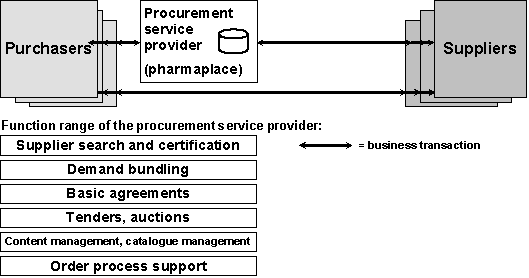
Fig. 2.1: Range of functions provided by pharmaplace
Partners
The core competence of pharmaplace lies in the optimisation of its members’ procurement powers. By concentrating on core competencies, all technology is purchased and operated by external partners.
3. Procurement solution
The procurement solution of pharmaplace is made up of several services. Collective sourcing, as the current most innovative component, is presented in detail below.
Collective sourcing supports the process traditionally carried out by purchasing cooperations or central purchasing departments. It offers purchasers the possibility of bundling needs with other community members on an ad hoc basis. Collective sourcing represents an active process, as the initiating purchaser actively invites other purchasers within the community to participate in a tender invitation or an auction.
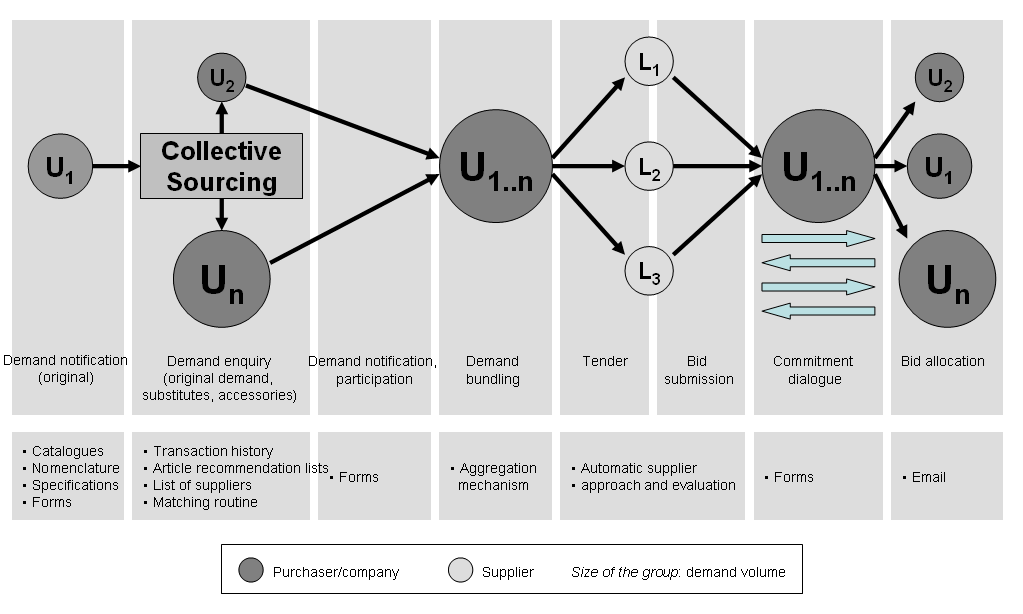
Fig. 3.1: Collective sourcing process
The process of collective sourcing is subdivided into eight steps (see Fig. 3.1):
- Products are selected for tender in the collective sourcing process within a nomenclature database – other terms for this are a product group list or structured article list – or a catalogue. By choosing a subject area or an article category, each purchaser has the possibility to identify the article to be procured. The purchaser initiating a tender is referred to below as an initiative purchaser.
- By stating the relevant procurement data (attributes, quantity, place of delivery, etc.) in a form generated by the system, the needs of the initiative purchaser are specified and summarised in a statement known as a request for demand (RFD). On the basis of the RFD, a recommendation list with relevant suppliers is automatically and actively extracted from the supplier archive. The system recognises the supplier’s range to which the tender article belongs in its type and quality or which supplier can produce it. Each purchaser can therefore access a significantly broader range of qualified suppliers.
- The initiative purchaser finally has the option of subjecting the procurement to collective sourcing, i.e. a joint, cross-company procurement. If the initiative purchaser decides not to choose this option, the specified needs are directly transferred to the linked tendering tool or an external tendering tool and the previously selected suppliers are informed. If the purchaser chooses the collective sourcing option, it triggers an initiative transaction. The system checks on the basis of the nomenclature or the catalogue whether other potential suppliers are stored in a corresponding demand archive. The check is carried out on the basis of transaction history or preferences (e.g. article, article groups or suppliers) of potential tendering participants which are stored in the system. In concrete terms, this means that companies who have already taken part in a transaction for the relevant article in all its varying specific forms or have stored their preferences for this are automatically recommended to the initiative purchaser as potential participants. The system therefore learns from temporary, virtual purchasing cooperations.
- The identified potential participants receive an invitation to the collective sourcing by e-mail. The potential participants access the relevant need specification via a link in the e-mail and can submit their individual request for demand. The RFDs of all invited purchasers are subjected to a matching algorithm and grouped into a request for quotation (RFQ).
- The total need combined within the RFQ is then sent as a joint tender invitation to the participating suppliers. The tendering procedure, inclusive of the result input and administration, is carried out by the system provided by pharmaplace. Suppliers submit their offer based on the total volume of the enquiry. They have the possibility to deposit price ranges, to show freight costs and, for example, to grant a discount on the total order volume.
- The suppliers’ offers are processed by the system. The system also breaks down the total offer and informs the respective interested parties about prices and terms of payment and delivery, taking into account the places of delivery and delivery dates. If requested, the system creates a system offer (synthetic price) consisting of all the items offered with the stated criteria and all the offers are combined in a ranking list.
- The system finally moderates the price negotiations between suppliers and purchasers. In a commitment phase the confirmations and rejections for the current offer are dealt with. Should purchasers withdraw from the tendering process after the supplier has submitted an offer, the system automatically calculates the prices which apply to the other purchasers. In order to achieve the best possible price, purchasers have the possibility to increase their sub-quantities at a later stage.
- The terms and conditions which are negotiated for each individual purchaser are supplied to conclude the agreement.
Collective sourcing represents an intelligent procurement system for SMEs, which exceeds the functionality of conventional tendering systems due to its dynamic cooperation concept. It allows participants to utilise the full potential of e-procurement and to benefit from bundling effects in spite of small, individual requirement volumes.
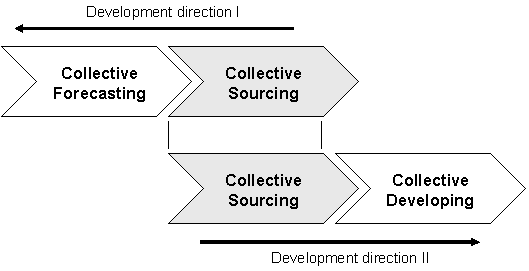
Fig. 3.2: Development directions of collective sourcing
Collective sourcing can be extended in two development directions (see Fig. 3.2):
- Collective forecasting: bundling already takes place in advance of the order. It is thereby possible to place small quantities with specific suppliers (“peak shaving”). This results in greater supplier satisfaction and improves conditions for purchasers.
- Collective developing: collective sourcing forms the basis for a joint product development tier between specialist departments or between companies. New purchasing strategies, such as target costing or advanced procurement, can be supported electronically in this way.
4. Implementation
Software solution/programming
The pharmaplace services are made available to participants in the form of an application service providing (ASP) solution. Fig. 4.1 shows the software architecture which was developed for this. In addition to HTML, both VB Script and Java Script are used to create the graphical user interface (GUI). The core functionalities of the solution are encapsulated in business objects (BO), which are programmed in VisualBasic and C++. The SQL database is accessed via data access components (DA), which have also been developed with the aid of VisualBAsic and C++. Software agents process concrete transactions and business exchanges. They access business objects and data access components for this purpose.
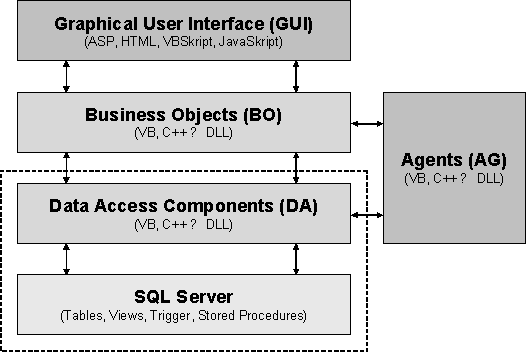
Fig. 4.1: Software architecture of the pharmaplace platform
The collective sourcing tool of pharmaplace has a modular structure and consists of several layers (see Fig. 4.1). The core functionalities lie within the language and aggregation layer and consists of four main modules:
- Catalogue/nomenclature database: while catalogue structure and functionality resemble a conventional catalogue system, the nomenclature database also uses industry-specific synonyms. Suppliers can be deposited at article (group) level and the concrete supplier information is freely definable.
- Tracking mechanism: with the aid of the tracking mechanism, data records which are vaguely connected to the article selected for collective sourcing can be extracted from the transaction history. Purchasers who purchased identical or related articles in the past are identified in this way.
- RFD mechanisms: Request for demand (RFD) is an online form that facilitates the input of all offer-related factors pertaining to the chosen article, e.g. quantities, attributes and prices. On the basis of the RFD of the initiative purchaser, each purchaser taking part in the collective sourcing creates an individual RFD, which may, for example, contain individual quantities or prices.
- Matching routines: the bundling of the individual RFDs into a joint request for quote (RFQ) is carried out with the aid of matching routines. These logically group together similar needs and identify suitable suppliers.
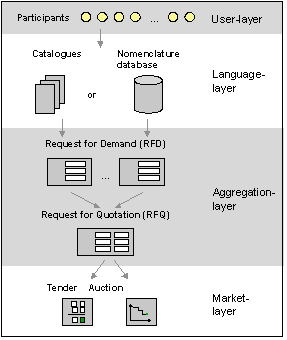
Fig. 4.2: Layer structure of the collective sourcing software
Technical platform
The pharmaplace solution is implemented on the basis of Microsoft products. The servers run on the operating system MS Windows 2000 server. The utilised database is an MS SQL server 2000.
5. Operation
Maintenance
The pharmaplace platform was developed and is operated by different external technology partners.
Benefits
The system of collective sourcing generates sustained benefit effects for all process participants:
- Purchasers: for purchasers, conventional platforms represent anonymous systems which do not facilitate any direct, personal communication with the platform operator and other community members. They also do not offer any additional information, such as supplier quality or members’ ordering behaviour. The additional benefits produced by collective sourcing, as far as the purchaser is concerned, are a reduction in purchasing costs through the use of different price versus quantity rates, an improvement in the negotiating position due to an increase in commercial attractiveness for potential suppliers, a reduction in process costs due to considerable time savings and reduced administration costs, targeted supplier selection, an increase in offer and price transparency, and an active approach.
- Suppliers: suppliers are having to face increasingly stiff competitive and thus extreme pricing pressure. The foundation of a purchasing cooperation and the use of new purchasing instruments (tendering and auction systems) pursues the primary objective of further reducing purchasing prices. By using collective sourcing, suppliers have the possibility to reduce preproduction costs by increasing the batches in production due to larger sales volumes and to lower distribution costs by submitting offers electronically, an “automatic” acquisition of customers through the system, and an automatic aggregation of orders.
- Pharmaplace: the use of collecive sourcing also leads to positive benefit effects for the platform operator. These are above all reflected in a higher degree of customer loyalty, as participants are approached actively, the targeted merger of supply and demand, higher revenues (transaction fees) through the use of collective sourcing tools, differentiation from sectoral competition due to improved service (unique selling proposition), the increased use of the services outsourced to collective sourcing (logistics, financial services) and an increase in content quality.
Profitability
In addition to the process cost argument, the expected reduction in material costs especially motivates SMEs to participate in pharmaplace. In practice, companies mostly use e-procurement solutions as an initial step to purchase C articles and expendable items. Significant reductions in purchase prices can already be achieved by using pharmaplace to procure these low-cost items.
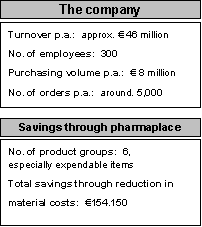
Fig. 5.1: Quantitative benefit effects of a pharmaplace partner in the first year of participation with 6 product groups and the focus on expendable items
The reduction in material costs for the company represented in Fig. 9.6 was achieved through collective sourcing, among other things. Thus, the costs for toner were reduced by more than 10% for one participant (see Tab. 5.2) and for other material groups average savings were between 7% and 14% (see Tab. 5.3).

Â
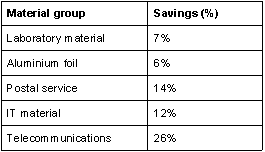
Â
6. Success factors
Specialities of the solution
Compared to the established e-procurement tools which are also available from pharmaplace, collective sourcing has two particularly outstanding success factors:
- Sector-specific features: past experience has shown that marketplaces and e-procurement platforms which present themselves as general “horizontal hubs” are only of marginal interest to SMEs due to their focus on process costs. With sector-specific platforms, known as “vertical hubs”, this is not the case. Due to the procurement support for specific capital goods, they offer both pure process optimisation and the possibility to reduce material costs by using scaling effects. Mostly, scaling effects are achieved by bundling (forecast) annual requirements and the negotiation of appropriate basic agreements. This agreement process, which becomes more complex as more participants become involved, is automatically processed by collective sourcing in the coordination and tendering operation.
- Proactivity: collective sourcing can actively support the procurement process on the basis of the sector-specific nature of the nomenclature and transaction history. In concrete terms, this means that purchasers are automatically informed if, for example, tenders are being invited for materials that appear to be of particular interest to the purchaser’s company. In this connection collective sourcing utilises the preferences deposited by the purchaser and, if applicable, its ordering behaviour in the past.
Changes
The idea of integrating changing, virtual purchasing cooperations per product into the pharmaplace platform could be achieved by usign the collective sourcing system. The potential created by today’s technology can only be completely exhausted by using collective sourcing. Thus, pharmaplace participants benefit from the scaling effects of e-procurement, in spite of small individual tendering requirements, and achieve price advantages which would be unattainable without collective sourcing.
Lessons learned
It has become clear that one of the main challenges faced by pharmaplace is how to break down and change the traditional procurement processes employed by participants. Procurement processes which have, in some cases, established themselves over many years cannot be changed within a short time through the use of new technologies and media. Even if purchasers are convinced of the advantages of the pharmaplace platform and the technical aspects of the tool, converting their daily working processes means considerable effort. Pharmaplace must play a key role in this respect and encourage companies to use the new technologies and media with a variety of different measures.
A further realisation was that the benefit effects of collective sourcing not only apply to participants, for instance through improved terms and conditions, but also to pharmaplace as a cooperation. The cooperation-specific processes, such as the indentification of potential cooperation partners, selection of suppliers and the negotiation of basic agreements, are significantly improved by the collective sourcing system. For the purchasing team of pharmaplace, this means they can devote more time to their core business, i.e. developing new product groups and suppliers, negotiating with suppliers, looking after members and paring down the cooperation process further.



